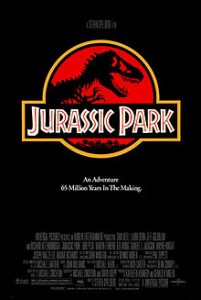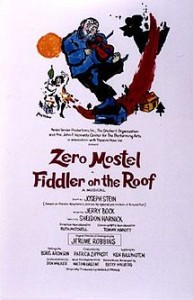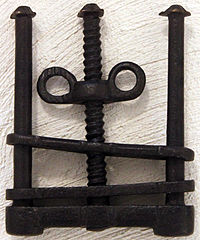Today I’m discussing why and how writers increase conflict in their stories. Long-term fans of this site with keen memories will recall that I promised to get to this topic in a previous blog entry. Far be it from me to let you down.
Conflict is a necessary part of all stories and it’s a good idea to ramp up the level of conflict as your story proceeds, both to hold your reader’s interest by building tension, and to subject your protagonist to a progressively more difficult test of character, forcing him or her to confront inner fears or character flaws.
 Let’s look at a couple of examples. In the 1993 movie “Jurassic Park,” directed by Steven Spielberg and based on a novel of the same name by Michael Crichton, we see a gradual step-up in conflict. The central protagonist, Dr. Alan Grant, is persuaded to leave a paleontological dig to conduct a review of a theme park. Once there he is awed that the park engineers have re-created living dinosaurs. He is put in close contact with children, which he dislikes. When part of the park’s security system is deactivated, a Tyrannosaurus attacks the group. Grant and the children must spend the night in the park, with predatory dinosaurs on the loose. They encounter cunning Velociraptors, and finally both Velociraptors and the Tyrannosaurus.
Let’s look at a couple of examples. In the 1993 movie “Jurassic Park,” directed by Steven Spielberg and based on a novel of the same name by Michael Crichton, we see a gradual step-up in conflict. The central protagonist, Dr. Alan Grant, is persuaded to leave a paleontological dig to conduct a review of a theme park. Once there he is awed that the park engineers have re-created living dinosaurs. He is put in close contact with children, which he dislikes. When part of the park’s security system is deactivated, a Tyrannosaurus attacks the group. Grant and the children must spend the night in the park, with predatory dinosaurs on the loose. They encounter cunning Velociraptors, and finally both Velociraptors and the Tyrannosaurus.
 Conflict need not be physical, or even dangerous. In the 1964 musical “Fiddler on the Roof,” with music by Jerry Bock and lyrics by Sheldon Harnick, the conflict is of a different nature but also increases. The village milkman, Tevye, must first contend with the fact that his eldest daughter has chosen her own husband against tradition and his wishes. Then his second daughter likewise makes her own marital match, but with a political and cultural radical. Later his third daughter seeks to marry outside the Jewish faith. Finally, on orders from the Tsar, Russian authorities expel the Jewish villagers from their town.
Conflict need not be physical, or even dangerous. In the 1964 musical “Fiddler on the Roof,” with music by Jerry Bock and lyrics by Sheldon Harnick, the conflict is of a different nature but also increases. The village milkman, Tevye, must first contend with the fact that his eldest daughter has chosen her own husband against tradition and his wishes. Then his second daughter likewise makes her own marital match, but with a political and cultural radical. Later his third daughter seeks to marry outside the Jewish faith. Finally, on orders from the Tsar, Russian authorities expel the Jewish villagers from their town.
Notice how, in each case, the author chooses plot events that begin with small conflicts and then escalates, figuratively tightening  the screws as with the medieval torture device, progressively challenging the characters with more taxing situations. Just as the protagonist resolves or comes to terms with one disaster, a worse one occurs. Moreover, the nature of the conflicts is such that they strike at a character flaw. In Dr. Grant’s case, it’s his dislike of children. In Tevye’s case, it’s his over-reliance on tradition. The protagonists are forced to grapple with their own weakness and try to overcome it.
the screws as with the medieval torture device, progressively challenging the characters with more taxing situations. Just as the protagonist resolves or comes to terms with one disaster, a worse one occurs. Moreover, the nature of the conflicts is such that they strike at a character flaw. In Dr. Grant’s case, it’s his dislike of children. In Tevye’s case, it’s his over-reliance on tradition. The protagonists are forced to grapple with their own weakness and try to overcome it.
It’s sad, in a way, that writers must put their characters through the torture of increasing conflict intensity, just for the sake of reader enjoyment. But as long as the characters stay imaginary, it’s all legal, so ease your mind about that. You’re welcome to comment on this topic of increasing the level of conflict. I’ll return now to my Work in Progress (WIP). Please don’t mind any screams you might hear as the screws get tightened by—
Poseidon’s Scribe
